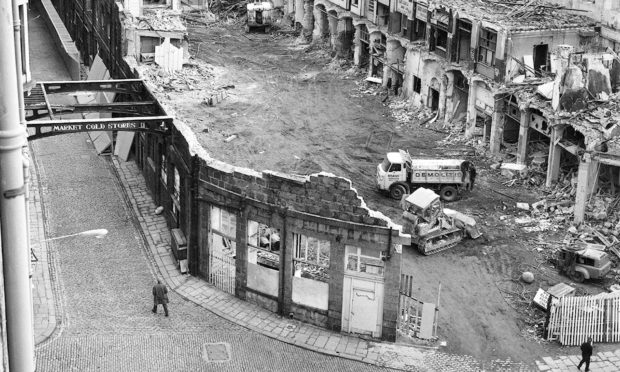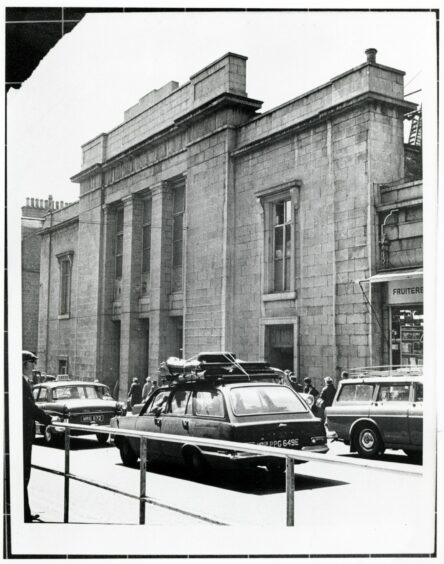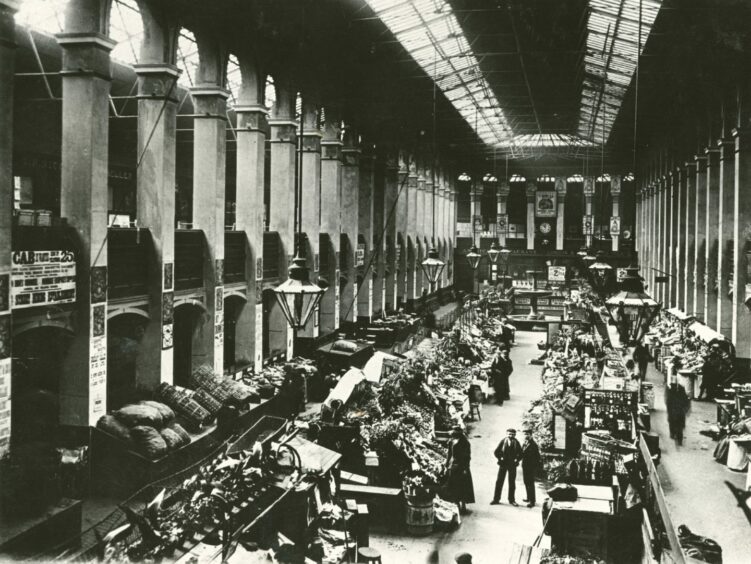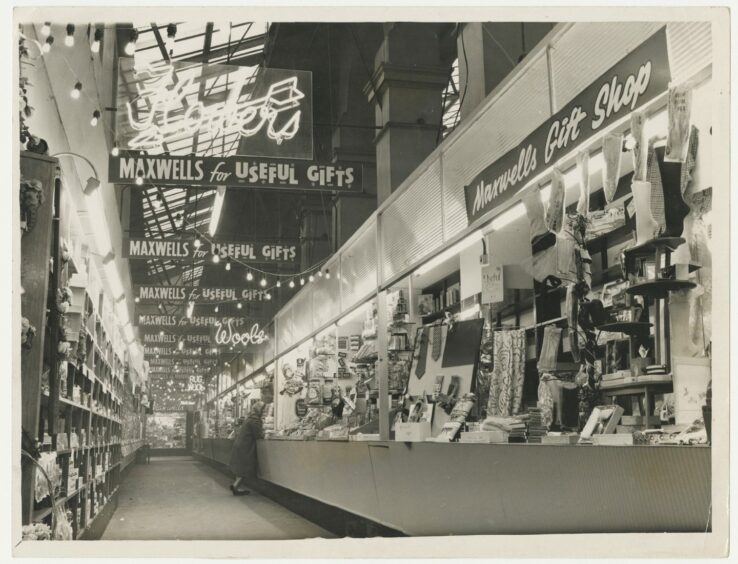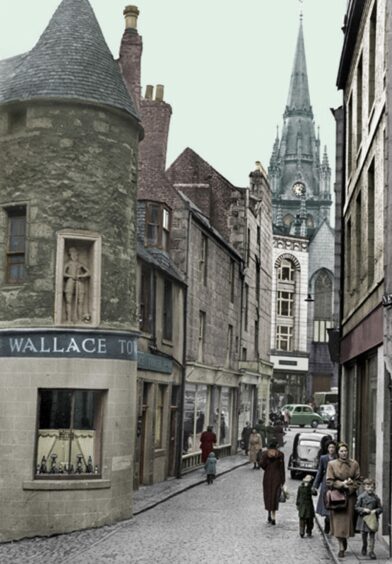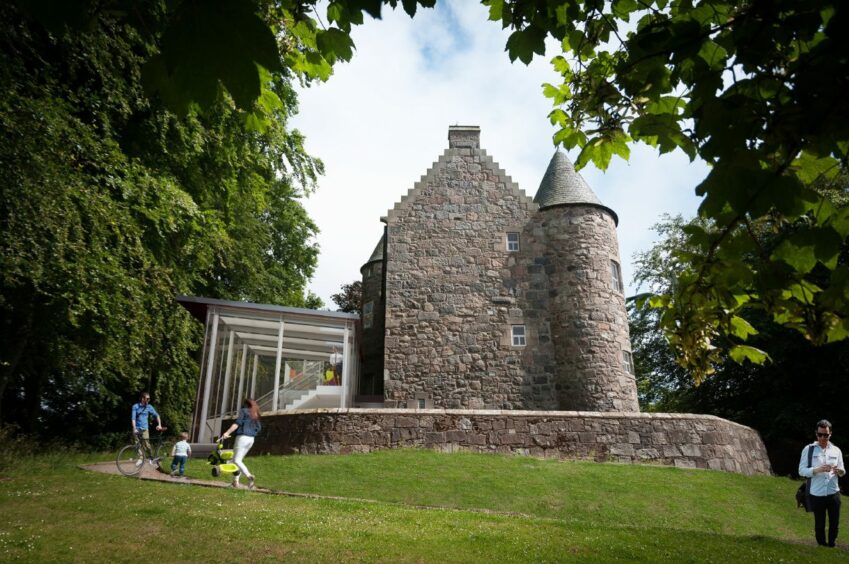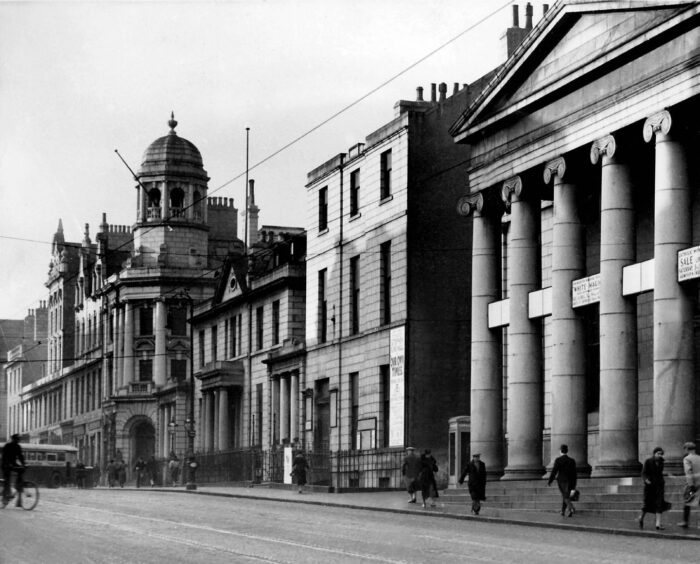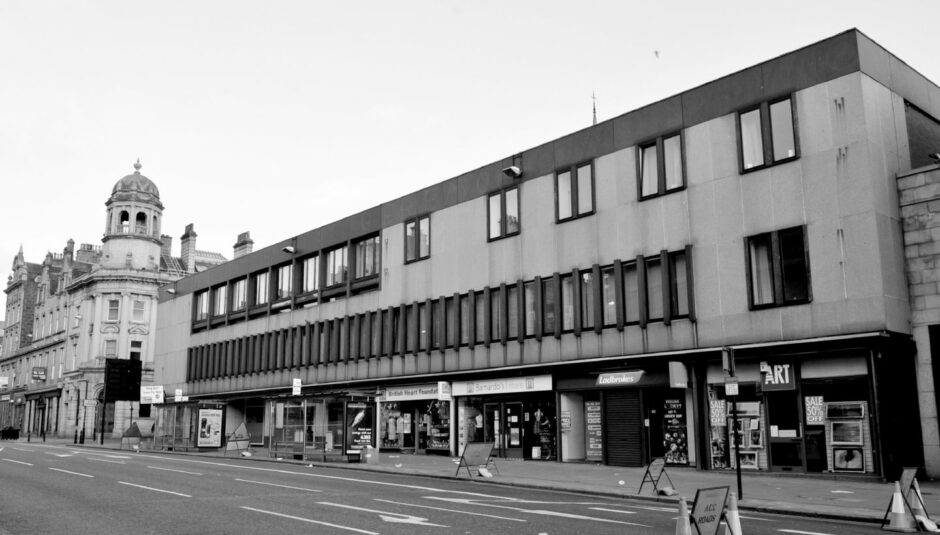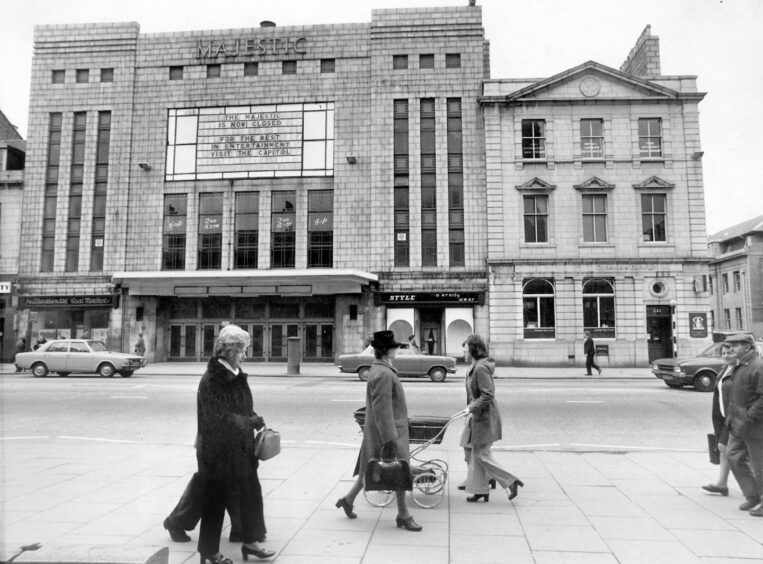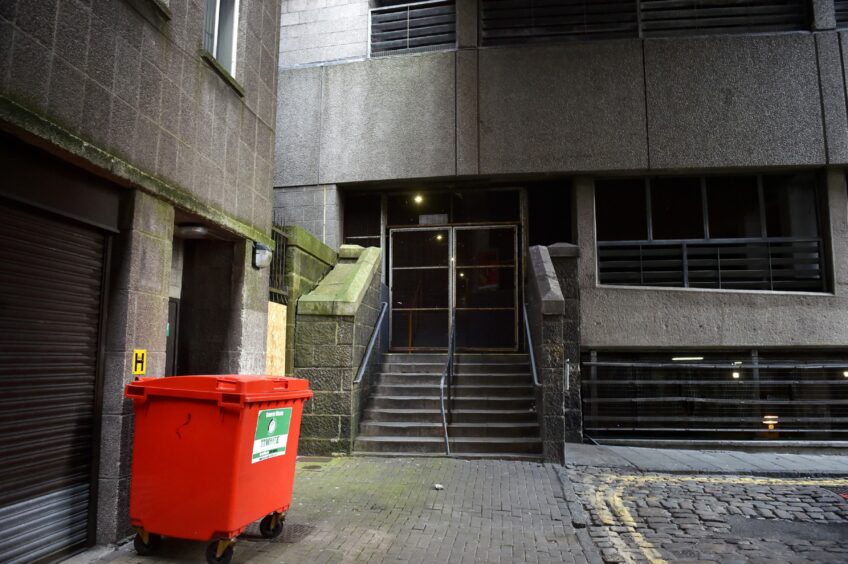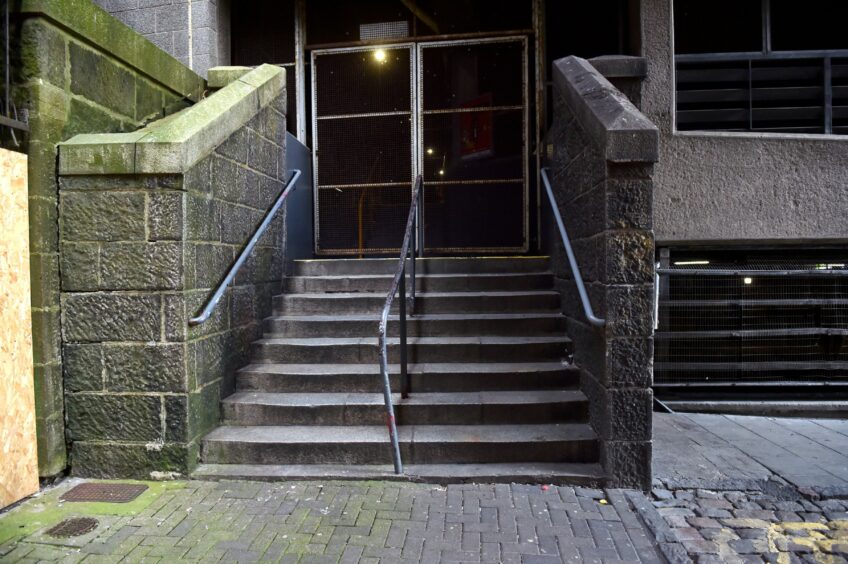The face of Aberdeen is once again about to change as the city’s Market is set to be demolished to make way for a new design.
To mark the development, local historian Fiona-Jane Brown takes a look at the lost buildings of the Granite City.
Use our interactive map to find the historic buildings featured.
1. Aberdeen Market
With the wrecking ball waiting in the wings for Aberdeen Market, history is repeating itself in the Granite City.
The current building, approved for demolition to make way for an 11-story glass and granite “lantern-shaped” office block, was itself a controversial replacement, sweeping away the grand Aberdeen New Market which stood on the Market Street site.
The original was a magnificent creation by iconic Aberdeen architect Archibald Simpson before it became one of many buildings lost over the years from the cityscape.
Local historian Fiona-Jane Brown says few tears will be shed when the current market is razed – other than the loss of the iconic Nuart mural which lifted the concrete carbuncle out of the doldrums.
“I’m sad for the mural, and I feel for the traders who have made it their own, but I’m not sad for the building. It’s disgusting.”
She believes the city was diminished when Simpson’s market, built in the early 1840s, was lost.
“It would have been so iconic to have a covered market and so many people talk about Archie Simpson’s market,” said Fiona-Jane, who operates the city’s hugely popular Hidden Aberdeen tours.
She said the New Market was commissioned by famed Lord Provost Alexander Anderson, who was interested in developing the city. He was the founder of Cala Homes.
“He said it would be good for the market traders to have a permanent home and he commissioned Archie Simpson to design it.
“It was absolutely glorious. Simpson was very into the classical, so this was a neo-Classical looking, Grecian-front building, with big windows. You had the two wings and the central part and it was just a beautiful building, harking back to the Georgian era rather than the Victorian period.”
The building was 100 metres in length from Market Street to East Green and the upper arcade had granite arches and a part-glazed roof.
Fiona-Jane said: “It was emulated by the Norco Arcade over in Loch Street as well. Not only was it an inspiring-looking building, it inspired other buildings in the city as well.”
In 1882 a blaze ripped through the market, gutting it, but it was completely rebuilt.
Fiona-Jane said: “It was eventually demolished in 1971 because British Home Stores had bought their site on Union Street and they wanted to extend. No less than poet John Betcheman was part of the campaign to save the original building. He was always somebody interested in historic buildings.
“As a poet, he was concerned about the romantic ideal of the past. I think he felt that was a living embodiment of a grand past and didn’t want it to go.”
2. Wallace Tower
There is, of course, one famous Aberdeen landmark that wasn’t so much lost as misplaced. The Wallace Tower was moved, brick by brick, from its imposing position in the heart of Aberdeen to Seaton Park to make way for the building of Marks & Spencer on St Nicholas Street.
“That was absolutely daft. It’s one of the things I talk most about on my city centre walks,” said Fiona-Jane. “Every time we are going down Carnegie’s Brae I point out where it was.”
That said, the fact the Wallace Tower is still with us, albeit elsewhere, is proof it’s a survivor, reckons Fiona-Jane.
“It was designed for Robert Keith, the Earl Marischal’s brother. The two of them didn’t get on, so he built it there so he could see what his brother was up to when he was getting Marischal College built. The college was planned around that time, but the Wallace Tower preceded it in 1588. It was a true medieval building.
“It belonged in its setting. By the 19th century, a pub had been started on the ground floor and the council were the owners. But the sad state it had been allowed to get into… it was just a wreck.”
Fiona-Jane said the Tower was moved in 1963 to allow the M&S building to go up, but only narrowly missed being demolished thanks to a high-profile campaign to save it.
“The historian, Dr WS Simpson, appealed to the chairman of Marks & Spencer and the incumbent Lord Marks at the time was quite shocked this was going to happen. He said they would pay to get it moved because they didn’t want to destroy it. This is the key as to why it was moved to Seaton Park. The Keith family had owned land in Seaton and Dr Simpson said ‘well, put it there’. He accepted that as a compromise rather than losing it altogether.”
Fiona-Jane believes it is a grave loss at its original site.
“It gave us the medieval context of the city. There’s absolutely nothing left in the city centre to give us that.”
3. Crimonmogate House
One grand structure that wasn’t so lucky to survive the urban planning decisions of the 1960s was Crimonmogate House. Better known as the former Royal Northern Club, it once stood proudly on Union Street at the junction of Huntly Street. Today there is no trace of where it stood, replaced by a parade of shops, including the Co-op.
“If you look at the original building and what’s there now, it’s just ugly.
“Alexander Keith, the historian, described the resulting building as a cross between an upright garden frame and a broiler house,” said Fiona-Jane.
Compare and contrast with the original Crimonmogate House built in 1810 and designed by the famed city architect John Smith, a contemporary and friendly rival of Archibald Simpson.
“He was known as Tudor Johnnie, because very like Simpson he liked the clean Georgian lines but was pretty good at Gothic if he wanted to be. The house was a commission by a local landlord called Patrick Milne.
“The important thing about it was that it was one of the first new houses built to the west of the Denburn after Union Bridge was built.
“It was absolutely stunning. It had two wings, a portico with steps up to it. It was a really beautiful building… and it would have been one of the first striking buildings you would have seen if you were coming across the new bridge. It would have been stunning, with its dressed granite front.”
It survived until 1963 and was knocked down for retail development after the Royal Northern Club moved to Albyn Place in 1955.
“And this is my point,” said Fiona-Jane. “Simpson and Smith were two of our most prominent Georgian architects, but barely any of their buildings survived in the 60s because of this desire to go crazy for the retail chains.”
4. The Majestic
Fiona-Jane is painfully aware of the number of old and particularly granite buildings lost to Aberdeen.
When the Torry Development Trust had been campaigning to save Victoria Road School, she was asked about the loss of granite buildings in the city to support their cause.
“I identified 23 granite buildings over different periods of time that have been demolished. Quite a few of them were cinemas and there were grand houses, the original Woodhill House, and the old Hazlehead House,” she said.
On the cinema front, Fiona-Jane particularly mourns the passing of the Majestic, designed by Torry-born architect Thomas Scott Sutherland and built in 1936 but pulled down in 1973.
“It was on the corner of Union Street where Caledonia House is now. It looked like something out of the New York skyline. It was a beautiful building, pure art deco, like its sister cinema, the Astoria,” she said.
“So many of the cinema buildings were stunning. To think that we had this and now we don’t… even the Capitol is a shadow of its former self.”
5. Union Street and the Bow Brig
The loss of buildings and streets is nothing new to Aberdeen and was happening long before the 1960s and 70s.
Prior to that, slum clearances of the 30s around Provost Skene’s House, saw streets vanish or reduced to mere remnants, like Guestrow, which once held Jacobean buildings, said Fiona-Jane.
But urban clearance was going on long before that.
In fact, the building of Union Street at the beginning of the 19th century swept away the heart of medieval Aberdeen.
“In one way, Union Street changed the city forever,” said Fiona-Jane. “It was never going to look the same after that, like Edinburgh’s Old Town does. That was gone, because they plonked it right on top of it. The old medieval layout of the city was just ripped out and I think that’s a loss. Edinburgh managed it, but we didn’t and it was happening at the same time.”
One echo of ancient Aberdeen can be found at the foot of Windmill Brae.
The stairs leading into the Trinity Centre car park is all that is left of the Bow Brig. It was the medieval entrance to Aberdeen, then a crowded city on a tiny square of land, bounded by the Denburn, the Gallowgate, the North Sea and the Dee.
“There were about five Bow Brigs, but the last one that remained into the modern era was built in 1747. It was a single arch granite built over the Denburn. About 45 years after it was built, Union Street came along to open up the city. The Bow Brig survived because it was a footbridge and right of way that led to the Green,” said Fiona.
In 1865, the Denburn railway came along and the stone bridge was moved into Union Terrace Gardens and is supposed to still be part of one of the Union Terrace arches.
The Bow Brig was replaced with a steel bridge, which kept the original stone piers, which can still be seen today.
“The bridge was strengthened in 1910 and that was what they called the Puffin’ Briggie that boys used to stand on and get a face full of steam,” said Fiona-Jane.
It was taken down in 1981 when the shopping centre was built.
“It was no longer viable to have it, even though it had been the main right of way into the city. It makes me laugh, because the right of way is still there but because the car park is privately owned, it’s locked at night.”
Of course, no city ever stands still. Buildings rise and fall, some are loved, some not so much.
Just how the “lantern” planned to replace Aberdeen Market will be viewed is uncertain. Only time will tell.
